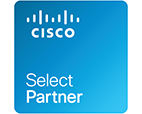
Network Design
Building the right networks
Simplify your campus connectivity with the right network design.
Robust networks must be properly planned and cannot be constructed haphazardly by simply putting standalone components together. The network design needs to identify the network requirements, identify best solutions to meet the needs of the business, and plan for future expansion.
The campus network is the portion of the enterprise network infrastructure that provides access to network communication services and resources to end users and devices that are spread over a single geographic location. The end users in a campus network may be dispersed more widely than in a single local area network (LAN) but are usually not as scattered as they would be in a wide area network (WAN). A typical network is segregated into three layers: the core, aggregation, and access layers (also known as a hierarchical architecture).
Designing a LAN for the campus use case is not a one-design-fits-all proposition. The scale of campus LAN can be as simple as a single switch and wireless AP at a small remote site or a large, distributed, multi-building complex with high-density wired port and wireless requirements. The deployment may require very high availability for the services offered by the network, with a low tolerance for risk, or there may be tolerance for fix-on-failure approach with extended service outages for a limited number of users considered acceptable. Platform choices for these deployments are often driven by needs for network capacity, the device and network capabilities offered, and also the need to meet any compliance requirements that are important to the organization.
Simplified Campus Operations
Our open, consistent solutions simplify operations and security for your campus network in a number of ways.
AI-Powered Wireless LAN
Gives you more predictable, reliable, and measurable Wi-Fi. It delivers deep insights and analytics that allow you to create extraordinary user experiences with services such as location-based wayfinding, advertising, and asset tracking.
Software-Defined, Cloud-Managed Orchestration
Simplifies the configuration and management of campus networks, as well as the WAN.
AI-Powered Wired Assurance
Lets you extend service-level indicators and expectations, anomaly detection, and smart troubleshooting for root-cause analysis and remediation to the wired Ethernet switching layer, all while correlating those actions with your Wi-Fi network.
Connected Security
Helps you see, automate, and protect your campus environment. We integrate our security products with those of our alliance partners and others for defense in depth that’s stronger than individual point solutions. You can also orchestrate your campus policy as part of your enterprise-wide rules-setting and enforcement.
Dynamic Security
With an intent-based policy-management application, helps contain or eliminate threats before they can cause damage. Advanced threat prevention capabilities and network access control (NAC) systems automate the discovery and containment of network threats both inside and outside your network.
Extensible and Reusable Products
Protect your network investments while making sure that you’re never locked in to a vendor or solution if your requirements should change.
End-to-End EVPN-VXLAN
Architecture gives you the ability to manage your campus and data center as a single IP fabric.
Automated Ethernet Fabrics
Allow you to manage multiple network elements as a single, logical device. You can reduce the number of devices you manage by up to 90 percent, even as you grow your network.
Single Operating System
Works the same way in routers, switches, and firewalls throughout your network. You can qualify and integrate once and deploy and automate everywhere—and your network behaves predictably, end to end.
Closed-Loop Automation
Simplifies operations and decision-making through proactive planning, predictive diagnostics, actionable insights, and auto-remediation.
Simple, Cloud-Based, Centralized Management
Delivers visibility from a cloud-managed Web interface for smaller deployments. You can also use zero-touch provisioning (ZTP) from a cloud application to centrally preconfigure and ship a device to its location, where anyone can simply plug it in and connect the network cable to bring it online automatically.


